.

.
Historic & Hyperbolic
It’s been touted as the most “historic pay rise” in history. But the actual mechanics of the deal; the “fine print”; and other undisclosed facts may raise questions as how much of a “historic pay rise” the deal actually is.
As of 1 July, an estimated 55,000 healthcare workers would be in line for pay-equity increases ranging from a reported “15% to 50%”. The increase is estimated to be worth approximately $2 billion;
.

.
Meanwhile, the media, unions, and several blogs, lauded the settlement;
.
About 55,000 low-paid workers, mainly women, are about to get one of the biggest pay rises ever after details of a historic pay equity settlement are revealed today. – Dunedin Stadium blog
.
The government will implement a historic pay equity pay deal for aged and residential care workers worth $2.05 billion of extra pay for some 55,000 people – close to 2% of the total New Zealand workforce. – National Business Review
.
About 55,000 low-paid workers, mainly women, are about to get one of the biggest pay rises ever after details of a historic pay equity settlement are revealed today. – New Zealand Herald
.
In 2014 Kristine Bartlett won a huge victory in the Court of Appeal over pay equity. Now, it looks like that victory is about to pay off, with the government about to approve a huge pay settlement for underpaid women. – No Right Turn
.
The historic $2 billion pay rise for 55,000 care and support workers announced yesterday has been welcomed by unions, workers, and industry leaders. – Otago Daily Times
.
The government has agreed to the principles of equal pay outlined by Unions, Government officials and Employers. This is a historic achievement and brings us one step closer to achieving equal pay for underpaid women. – PSA
.
Tens of thousands of aged-care and disability workers will get a hefty pay rise today as a landmark equity deal kicks into effect. – Radio NZ
.
A historic pay deal for thousands of low-income care workers, mainly women, will be signed off today. – TV3
.
It is a day they should celebrate […] great day for worker rights. – The Daily Blog
.
This is a huge victory for health care workers, and for women. – The Standard
.
Obviously, the aged care settlement is excellent news for the workers who will directly benefit. – Werewolf/Gordon Campbell
.
Radio NZ described the settlement in simple terms;
Parliament last month unanimously approved a $2 billion settlement, boosting the wages of about 55,000 workers by between 15 and 50 percent.
It follows a legal battle by Kristine Bartlett, who argued she was underpaid because she worked in a mainly-female industry.
Ms Bartlett’s pay will now jump from $16 an hour to $20 – and then again to $23 by 2021.
However, what many people fail to fully appreciate is that the pay-increases will be spread over five years, as this Ministry of Health table, below, illustrates;
.

.
In Ms Bartlett’s case – and others in her Level 4 pay bracket – her pay will increase from $16.25 per hour to $23.50 per hour – a 44.6% increase. However, it should also be noted that [some] community support workers covered by this “equity pay rise” had not had any pay increase since the last collective agreement raised wages in October 2015.;
.
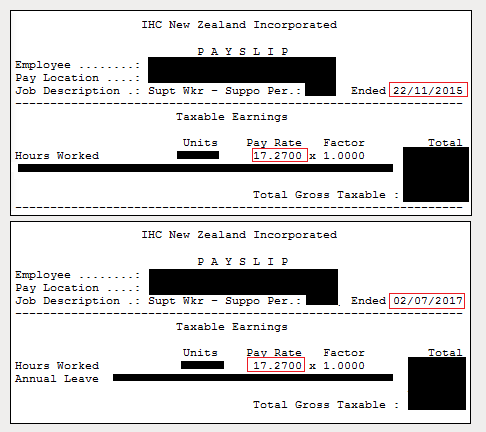
.
But in correspondence to this blogger dated 14 July, E tū Union’s assistant national secretary, John Ryall, disagreed. He pointed out;
Those on collective agreements had increases from the funding increases given to their employers during this period (very low – about 1%) and from the movement in the minimum wage in April 2016 and again in April 2017 (about 3% plus on each occasion).
What is undisputed is that the pay increases will be doled out in small multiples;
In 2018, the increase will be an addition $1 per hour (for Level 2 pay rates) – a 5% increase from 2017.
In 2019 the increase will be 50 cents an hour – just under 2.5% from 2018.
There will be zero pay increase in 2020.
In 2021, there is a $1.50 per hour pay increase from 2019 – a 7% increase, but over over two years.
John Ryall made clear that the settlement was an on-going process;
The Care and Support Equal Pay Settlement Agreed Position of the Parties says the following about the settlement – “Both parties (Unions and Government) are agreed that this settlement is an historic step forward for women workers in the elimination of systemic undervaluation of care and support work. As such, it is a significant step in addressing gender based inequality in New Zealand.” We did not even say in the settlement that pay equity had been achieved. We said it was a “significant step” as like the treaty settlements we did not believe that the rates themselves were high enough, but we were prepared to put this deal to a ratification vote (which incidentally was approved by 95% of care and support workers who voted) on the basis of settling, extinguishing claims for 5 years and having another go later if we felt there was still some ground to make up in terms of the Equal Pay Act.
John Ryall’s caution appears to be well-founded. However, the mainstream media and some blogs’ uncritical lauding of the settlement clearly failed to reflect the real situation that the settlement was a “significant step” toward pay equity. The complexity of the problem may have contributed to the ‘fog’ surrounding the settlement.
An inflationary fish-hook
Furthermore, a considerable portion of those planned increases will be swallowed up by inflation, as this Treasury graph, below, shows;
.

.
The inflation figure for year-ending June 2017 is 1.7%, according to latest Statistics NZ figures. Ms Bartlett is apparently well ahead this year.
Apparently.
Calculating inflation requires averaging several contributing factors. While domestic airfares were down 15% – vegetables were up 19%. It takes no stretch of the imagination which is more applicable to the daily lives of low-paid community care workers.
By 2018, inflation is around 1.7% – still ahead with her 5% increase.
By 2019, the inflation rate has climbed to 2.2% – almost swallowing up her 2.5% increase.
By 2020, inflation remains at 2.2% – and with zero pay increase this year, Ms Bartlett’s pay rise last year has been well eroded, and nibbling into her 2018 increase.
By 2021, inflation stands at 2.1% – eating into her 7% pay increase that covered not one, but two years.
On 22 April, I wrote to Minister for Health, Dr Jonathan Coleman, to ask how the pay equity settlement would take inflation into account;
“Will the planned increases be inflation-adjusted, to prevent any increase being watered-down by inflation?”
Seven weeks later on 8 June, Minister Coleman responded;
“The settlement agreement contains an agreed formula linked to the All Industries Labour Cost Index to ensure wage rates remain current over the five year settlement.”
This is critical, as the Care and Support Workers Pay Equity Settlement Agreement is a mechanism for pay equity. Any erosion by inflation negates the intent as well as benefits of the settlement.
The Settlement Agreement document confirms Minister Coleman’s statement that there will be an “agreed formula linked to the All Industries Labour Cost Index to ensure wage rates remain current over the five year settlement“. But there is a ‘fish-hook’. Any adjustment for inflation is post-poned for four years;
“If the All Industries Labour Cost Index by 30 June 2021 (for the period 1 July 2017 to 30 June 2021) moves on average by more than 1.7% annually then the figures in the above tables applying from 1 July 2021 will be adjusted accordingly.”
According to the Settlement Agreement, inflation adjustment will not “ensure wage rates remain current over the five year settlement“, as Minister Coleman asserted. Instead, any inflation-adjustment to pay-equity is not made until 1 July 2021 – at the conclusion of the agreed Settlement period.
I asked Council of Trade Union economist, Bill Rosenberg, to comment on inflation adjustment to the Settlement. Bill said he was not confident of Treasury inflation forecasts;
“…Forecasts, Treasury’s as much as any forecaster’s, are just forecasts and the further out they are the less reliable they are. Treasury takes the view that the long term rate of inflation is 2% and all their forecasts trend towards that.
Secondly their Budget 2017 forecast for March 2017 was out – they forecast 2.0 percent but it came in at 2.2 percent (illustrating the above point – though usually forecasts in the next year to 18 months are more reliable than further out). That puts out their June forecast. Recasting that, assuming they at least had the June quarter about right, their annual increases would be something like [this]“;
.

.
Bill compared his estimated inflationary figure with the 2017 BEFU (Budget Economic Fiscal Update), which yielded this table for predicted inflation;
.

.
“I’m not confident the June 2018 figure will be that low,” said Bill.
John Ryall was also unconcerned about inflationary pressures on the settlement, saying;
The wage rates will increase over the period from 1 July 2017 until 1 July 2021 by 13% on the bottom rate, 15% on the second level rate, 19% on the third level rate and 15% on the top level rate. This is still ahead of what the inflation rates are predicted to be for this period.
He also pointed out the settlement’s provision to make up for inflation in 2021;
Under the Care and Support Worker (Pay Equity) Settlement Act 2017 if the labour cost all industries index moves by more than 1.7% on average over the period 1 April 2017 to 31 March 2021 the final rates at 1 April 2021 will be adjusted upwards by the outstanding percentage.
However, that will not assist workers who leave the profession before 1 April 2021. Nevertheless, John did point out the significant gains to workers, adding;
There are very strong provisions in the Care and Support Worker (Pay Equity) Settlement Act 2017 for employers to do everything practically possible to “ensure” that all of their care and support employees get to the top step (ie complete a level 4 qualification). This means that very few of the care and support workers will be remaining on the same level as they complete their transition through from 1 April 2017 to 1 April 2021 and the increases take place as soon as they complete the qualifications, not having to wait for a service milestone after this date. This is a major piece of work for the unions in this period and I think will lead to a lot of future litigation and organising.
Whichever forecast becomes reality is almost irrelevant. What is relevant is that – spread over five years – the benefit of the $2 billion pay-out will be affected – perhaps weakened – by inflation.
On-going negotiations
I also asked Minister Coleman if the pay equity settlement would impact on future union wage negotiations;
“Will the equal-pay settlement and increase in wages have any impact on future Union-Employer wage negotiations? Or will future negotiations and demands for pay rises be considered a part of the pay-equity settlement?”
Minister Coleman responded that;
“The settlement addresses historic issues of systemic gender discrimination and does not extinguish the right of the 55,000 care and support workers to negotiate further rate increases or additional terms and conditions of employment with their employers.”
However, on page 5, the Settlement Agreement has done precisely that: extinguished rights;
“7. Subject to Executive and Parliamentary processes, the Parties acknowledge that the Legislation will cover the following matters:
[…]
(c) extinguish retrospective claims by Current Employees against Employers”
And on page 18,
“The unions accept that this settlement will from 1 July 2017 extinguish any separate ongoing service allowance or qualifications allowance for care and support workers within the scope of this agreement that is contained in any employment agreement.”
The page 5 proviso extinguishes past claims, whilst the page 18 proviso extinguishes current, on-going service and qualifications allowances.
Coleman added,
“The increases in care and support worker wage rates are not expected to significantly impact on contract negotiations with the approximately 1,100 employers. As noted above, the pay equity settlement does not extinguish the right of employers to negotiate price increases to meet increased operational costs.”
It is unclear what Minister Coleman bases his belief that “increases in care and support worker wage rates are not expected to significantly impact on contract negotiations”.
It remains to be seen whether future Union-Employer wage negotiations will yield further wage increases. If Employers point to the Pay Equity settlement as de facto pay-increases, then any equity in the settlement will be quickly eroded. By 2021, healthcare workers could be back to Square 1.
Should that happen, Unions may have to re-new pay-equity negotiations from scratch, as this Settlement agreement has a “sunset clause”;
This Settlement Agreement
[…]
(b) expires on 30 June 2022.
More hooks
Newsroom’s Teuila Fuatai also identified another potential fish-hook; under-funding the equity funding by government/Ministry of Health. Should the Settlement funding be insufficient for any reason, employers may opt to hire relatively inexperienced – and thus cheaper – staff. On 29 June, Ms Fuatai wrote;
Jessica Buddendijk, CANZ committee member, said the Ministry had fundamentally failed to account for “staffing numbers and length of service” in its calculations.
“Where a provider has a lot of very well educated, long serving staff, this tends to push them into the upper pay bands. With large numbers of [carers] needed because of the high dependency of those in aged care, this caused a huge error for which the providers have to bear the cost,” she said.
Simon Wallace, NZACA chief executive, warned that long term “many aged care providers may be forced to employ lower qualified and less experienced staff” because funding was weighted against having higher numbers of experienced and well-qualified workers.
There is precedent here.
National froze funding for ECE providers in 2010/11, sparking a massive, angry response from parents, ECE providers, and teaching staff. National’s agenda was to cut costs by abandoning the requirement to having early childhood centres fully staffed by qualified teachers.
In November last year, the NZEI released a survey pointing to increasing use of unqualified staff used by Early Childhood Education providers;
A new survey shows a six year funding freeze is threatening the quality of ECE as services say the freeze is forcing increases to parent fees, cuts to teacher pay, deteriorating child to teacher ratios, and increased reliance on unqualified staff.
An NZEI Te Riu Roa survey of 264 early childhood centres around the country found that 87% had experienced shortfalls since the Government first froze per-child funding six years ago, and 70 percent had increased fees – by an average of 29% – as a result.
Since 2010, increases in government funding for ECE have been for increased participation only, meaning services have faced real-term cuts to their core per-child funding.
[…]
• 41% of centres have reduced their ratio of qualified teachers in favour of cheaper unqualified staff.
According to the Newsroom story;
Health Minister Jonathan Coleman said he was unaware of any providers being underfunded. “No one has told us that they’re underfunded, but the Ministry is working with some providers who have raised viability issues.”
Remain Calm – Don’t Hyperbolise
Interestingly, it was the student magazine, Salient, that reported the pay-equity settlement announcement on 1 May with restrained language. There was no hyperbole such as “historic”, “victory”, “big pay rise”, etc;
Care workers win equal pay
The New Zealand government has announced a $2 billion settlement for care workers, after a lengthy court case led by aged-care worker Kristine Bartlett. Bartlett argued that the sector’s low wages were due to it being a female dominated industry, and were in conflict with the Equal Pay Act.
On July 1, depending on qualifications and experience, 55,000 workers across the sector will receive pay rises between 15 and 49 per cent.
The significance of the pay rise was explained by Health Minister Jonathan Coleman: “For the 20,000 workers currently on the minimum wage of $15.74 per hour, it means on July 1 they will move to at least $19 per hour, a 21 per cent pay rise.”
The settlement includes pay rises for workers who are above minimum wage and rewards those with qualifications and experience.
To back-pay or not to back-pay – why is it the question?
Lastly, on the issue of back-dating salary increases, I asked Minister Coleman;
Why was the settlement not back-dated when MPs automatically have their pay-increases backdated? Especially when negotiations with relevant parties was announced nearly two years ago on 20 October 2015 (by yourself) and has been on-going since.
Members of Parliament regularly have their salary increases backdated by the Remuneration Authority;
.

.
.

.
Despite the Minister responding to a previous question stating that “the settlement addresses historic issues of systemic gender discrimination and does not extinguish the right of the 55,000 care and support workers to negotiate further rate increases or additional terms and conditions of employment with their employers” – his response to the question of back-dating the claim was in direct contradiction;
“The unions and the Government agreed that the settlement would extinguish all pay equity claims made prior to 1 July 2017 for eligible employees.”
Not just contradictory – but a total evasion of the question itself. Minister Coleman simply could not explain why highly-paid members of Parliament have salary increases back-dated – but lowly-paid healthcare workers do not enjoy the same privilege.
E tū’s John Ryall, however, was less critical and more pragmatic with his explanation;
In the history of NZ all settlements under the Equal Pay Act have been negotiated settlements. In the 1970s these were normally done in 3 or 4 steps and none of them included backpay because of the complications that arise with who is entitled to it (previous employees or current employees, union members or non-members) and when large industry settlements are done the backpay can sometimes be worth more than the settlement. Are we trying to put right historical injustices or pursue compensation and in the case of the private sector will the compensation mean that employers become insolvent rather than lifting wage levels across the sector market to a minimum level that everyone has to pay. In the view of the unions who negotiated the settlement we were trying to put right an historical injustice that I personally have spent the last 35 years of my life on (I was worried it could take another 35 years before we ever saw a cent of what we were seeking and that Kristine Bartlett and myself would be dead and buried).
The pay equity movement by unions is a nobel cause and long past it’s due-date. It is disappointing that the settlement was marred by a government unwilling to apply principles of compensation that Parliamentarians regularly apply to themselves.
As John Ryall was determined to explain;
…this settlement has given confidence to hundreds of thousands of low paid workers who have found some leverage to get their abysmal pay rates increased. Already we are signing off a settlement on Monday for 1700 vocational disability support workers, we are pursuing a case in the Employment Relations Authority and putting pressure on government about 3000 mental health support workers and we have heaps of other workers who are approaching us about getting organised around equal pay as a lever to increasing wage rates across their industries. Other unions have cases running for 12,000 school support staff, about 3000 social workers, 2000 hospital administration workers and WINZ front line staff as well as a case for Countdown workers (distribution centre male employees v checkout female employees)
However, it still remains to be seen if this de facto Wage Order by National will achieve it’s intended aims. Especially where a National government is concerned.
But as John Ryall made clear;
The National Government could have ridden the Bartlett court case out and we may have got a judgement in another five years time, by the time it went through all levels of the courts, and then we would have needed to take cases for all the other workers in the three sub-sectors as well as vocational disability and mental health.
We made the judgement that negotiating a settlement was the right way to go. There are issues around the funding but the bigger picture is the re-distribution of income that this process has set up, which I think is eventually going to mean some hard questions about governments about the taxation system that is going to be needed to pay for it.
This blogger accepts the hard work by Ms Bartlett and the unions involved. But one thing we cannot over-look – there is no room for complacency. Once the hyperbole is stripped away, it is clear that far from being a giant leap for low-paid workers, it was a small step.
Last word
From John Ryall;
We made the judgement that negotiating a settlement was the right way to go. There are issues around the funding but the bigger picture is the re-distribution of income that this process has set up, which I think is eventually going to mean some hard questions about governments about the taxation system that is going to be needed to pay for it.
Disclosure
The author of this story is employed in the community-care sector, and therefore has a vested interest in pay equity.
.
.
.
References
Beehive: $2 billion pay equity settlement for 55,000 health care workers
National Business Review: $2b pay equity package for aged care workers confirmed
NZ Herald: Big pay rise for women – Deal likely to alarm private sector
Otago Daily Times: Carers’ $2b pay rise hailed
PSA: Equal Pay
Radio NZ: Dollars in pockets as historic pay equity deal takes effect
TV3: $500m pay rise for care workers
Ministry of Health: Care and Support Workers (Pay Equity) Settlement Operational Policy Document (p10)
Treasury: Economic Outlook – The outlook for the economy is positive
Statistics NZ: Consumers Price Index – June 2017 quarter
Treasury: BEFU 2017
Ministry of Health: Care and Support Workers (Pay Equity) Settlement Agreemen (For Aged Residential Care) (p 5, 18)
Ministry of Health: Care and Support Workers (Pay Equity) Settlement Agreement (p4)
Newsroom: Pay equity deal’s missing millions
Fairfax media: Hundreds march over early childhood cuts
NZEI: ECE survey shows children and families paying for funding cuts
Salient: Care workers win equal pay
Beehive: Government to enter negotiations over pay for care and support workers
NZ Herald: MPs’ pay rise officially confirmed
Radio NZ: MPs given 2.5 percent pay rise
Acknowledgements for assistance
Dr Jonathan Coleman, Minister for Health
Bill Rosenberg, NZCTU
John Ryall, E tū Union
Additional
Employment New Zealand: Previous minimum wage rates
The Spinoff: After the equal pay decision, joy – and anxiety – from care workers who missed out
Other Blogs
Dunedin Stadium: Payrise for low-wage workers in aged care and home support #genderpaygap
No Right Turn: A victory for women
The Daily Blog: Courts finally give the poorest workers what the Government wouldn’t and the Unions couldn’t
The Standard: Thank you health care workers
Werewolf: Gordon Campbell on the aged-care settlement
Previous related blogposts
1 March – No Rest for Striking Workers! (1 March 2012)
No Rest for the Wicked (23 March 2012)
“It’s one of those things we’d love to do if we had the cash” (28 May 2012)
Roads, grandma, and John Key (18 July 2012)
John Key’s track record on raising wages – 4. Rest Home Workers (11 November 2012)
Aged Care: The Price of Compassion (16 November 2012)
That was Then, This is Now #22 – Lowest wages vs Highest wages (31 January 2014)
The consequences of tax-cuts – worker exploitation? (31 October 2015)
Special Education Funding – Robbing Peter, Paul, and Mary to pay Tom, Dick, and Harriet (27 August 2016)
Health care workers pay increase – fair-pay or fish-hooks? (28 April 2017)
.
.
.
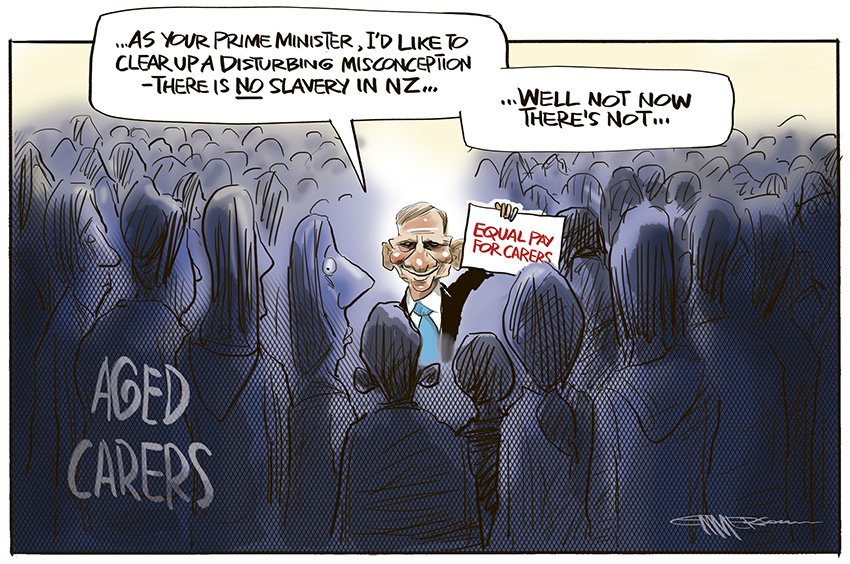
.
.
= fs =

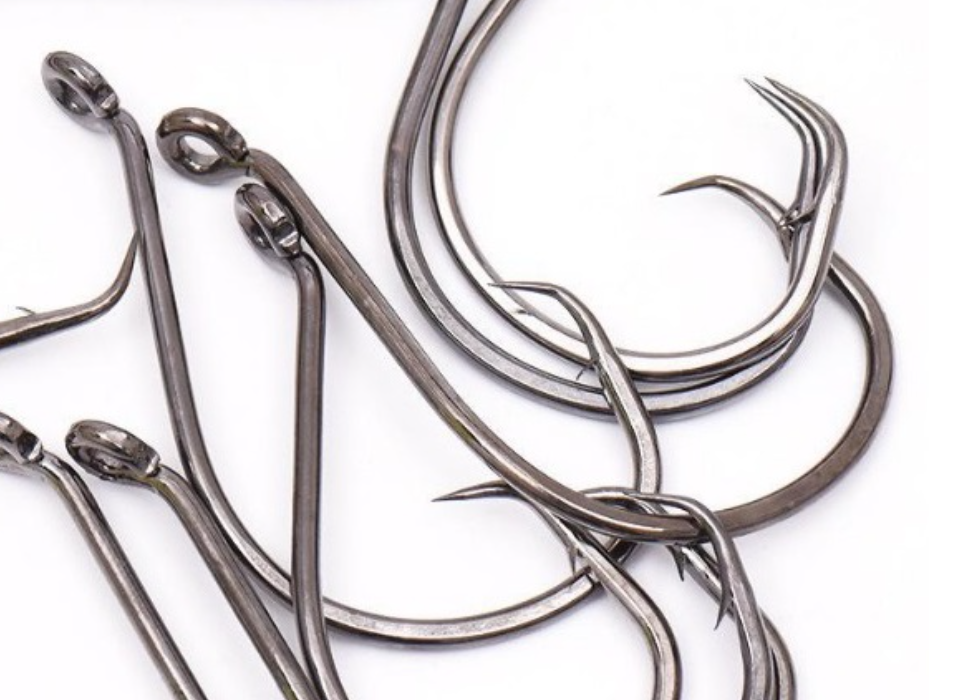
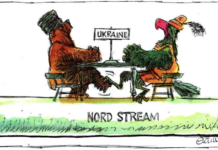

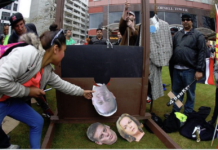

it was time to settle, on this case, and the settlement certainly raises some problems, particularly of enforcement, but to me as a life long unionist, they are useful problems, for the first time since “Zero Hours” probably, unions have made a national splash and achieved a positive result for low paid workers
the industry is split into all sorts of nooks and crannies with a multiplicity of funders and “service providers” and “service users”, some of the carers work alone in peoples homes so it is difficult to even get them together for a meeting, but nonetheless Etū held a national round of meetings prior to July 1
there will be hundreds of followups as companies such as Idea Services are already trying to undermine the settlement via fiddling the grade system, smaller providers are diverting funding meant for the people covered so existing managers can maintain a pay margin etc. etc.
but the upside is a lot of the workers are now switched on to their workplace issues, they pay attention, they are getting involved and more are joining the union and getting ready to move people thought the grades, the Rest Home association and govt did not want this at all, but with organisation it will happen, and spread to other industries
It seems the unions have made the best of a bad situation. Let’s hope the pay equity doesn’t get whittled away to nothing.
thats right, workers were never handed anything on a plate, this pay equity settlement was the result of decades of persistance, it is beyond belief that a hostile, union busting govt. would implement it flawlessly
so it is as always, up to the workers to organise around the settlement and push it through
Frank, MANY THOUGHTS CAME TO MIND AS I READ THIS.
If it sounds to good to be true then it is a lie.
TO GOOD TO BE TRUE!!!!
ALL SMOKE & MIRRORS.!!!!
National cook the books and always do.
CG, I have a nagging feeling you might be right.
This is one of those rare occasions when I hope I’m wrong, and a hundred people point their fingers at me and tell me that I got it wrong.
I’ll be a very, very happy chappy if I’m wrong, believe me.
Good heart you have Frank;
Please keep healthy for the long journey we have to take together.
+1
Always appreciate your articles Frank, but just one point that you have confused – the Labour Cost Index is the measure of wage increases, not the measure of inflation. For the last few years it has run ahead of inflation and with pay equity-based increases such as those in the care and support and other sectors it is likely to run ahead for the next couple of years as well.
There is another part to this story were high needs disabled people and chosen full time unpaid caregivers are being denied allocated in home care hours.
What Wairarapa DHB Focus needs assessor and provider company Healthcare NZ HHL Group have done for over four years is criminal.
And this is what a disabled caregiver is subjected to for filing a complaint connected to Wairarapa DHB’s broken, dangerous mental health system.
The New Zealand MOH has nearly finished their investigation; I have all documents to prove; that the DHB Focus and Healthcare NZ were intent on n causing harm; not providing allocated MOH care hours.
I firmly believe this a matter for the New Zealand Police.
Link to my blog; Wairarapa DHB posted my personal medical notes on fyi website; FYI were forced to remove and censore my OIA.
Why do DHB’s act like mini dictatorships,breaching laws and rights to conceal gross negligent misconduct.**
https://humanrightscomplaintsnewzealand.wordpress.com/
There is another part to this story were high needs disabled people and chosen full time unpaid caregivers are being denied allocated in home care hours.
What Wairarapa DHB Focus needs assessor and provider company Healthcare NZ HHL Group have done for over four years is criminal.
And this is what a disabled caregiver is subjected to for filing a complaint connected to Wairarapa DHB’s broken, dangerous mental health system.
The New Zealand MOH has nearly finished their investigation; I have all documents to prove; that the DHB Focus and Healthcare NZ were intent on n causing harm; not providing allocated MOH care hours.
I firmly believe this a matter for the New Zealand Police.
Link to my blog; Wairarapa DHB posted my personal medical notes on fyi website; FYI were forced to remove and censore my OIA.
Why do DHB’s act like mini dictatorships,breaching laws and rights to conceal gross negligent misconduct.**
https://humanrightscomplaintsnewzealand.wordpress.com/
[…] blogpost was first published on The Daily Blog on 24 July […]
Comments are closed.